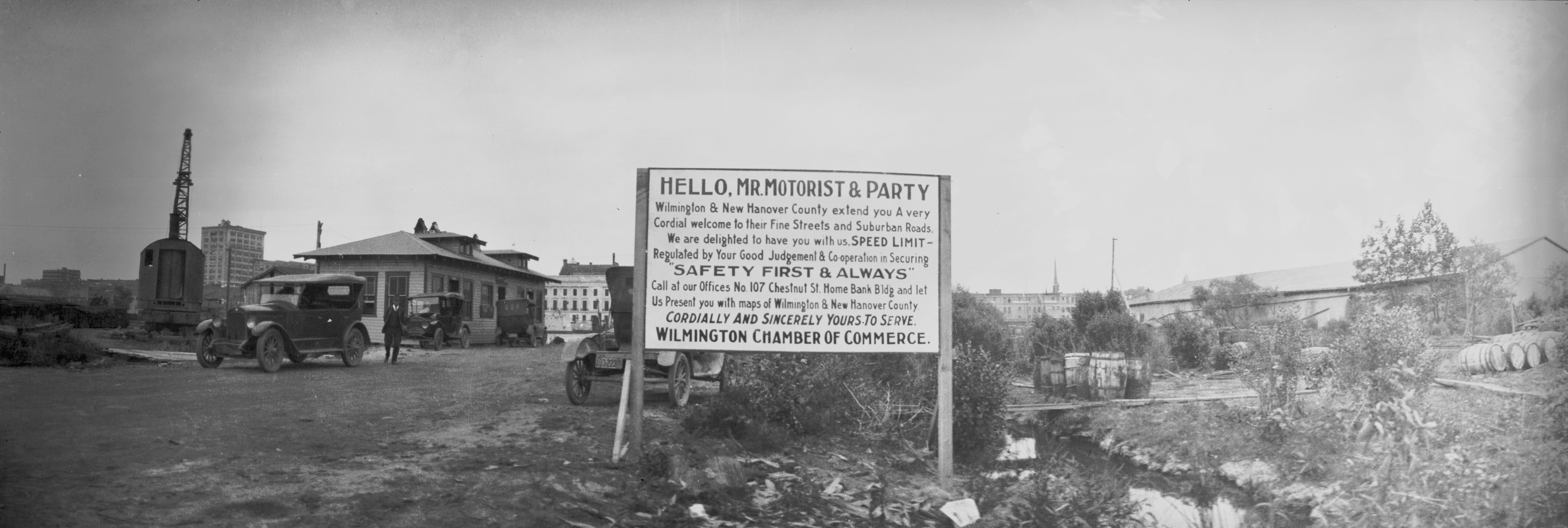The second edition of the 2001 book, Wilmington Through the Lens of Louis T. Moore, is being posted here, chapter by chapter. Mr. Moore’s panoramic photographs of Wilmington, North Carolina and surrounding areas document history; preserve what is lost in terms of people, architecture, and landscapes; and create a mood. Just as his camera was considered hi-tech during the 1920s in Wilmington, we think Louis T. Moore would smile if he knew his work was appearing in cyberspace.
Wilmington Through the Lens of Louis T. Moore was written by Susan Taylor Block, and published by the Historical Society of the Lower Cape Fear and New Hanover County Public Library. Mr. Moore was a founding and enthusiastic member of the historical society and his photographs are housed in the public library, one of his favorite places. Copies of the bound edition are available through the Historical Society of the Lower Cape Fear (910-762-0492).
The 2001 edition was edited by Suzanne Nash Ruffin and designed by Jane L. Baldridge. The second edition is being edited by the author to reflect new discoveries and identifications.
Wilmington Through the Lens of Louis T. Moore is dedicated to the late Florence Hill Moore Dunn, Margaret Yeamans Moore Perdew, and the late Ann Kidder Moore Bacon, beloved daughters of Louis Toomer Moore and Florence Kidder Moore.
The Photographs Begin:
(Click on image to enlarge)
One of Louis T. Moore’s first projects as executive director of the Chamber of Commerce was to erect this sign. Soon after, he purchased an unwieldy wide-angle lens camera. It had no flash and was capable of taking only two photos before it needed reloading. “There is no doubt that the photos will attract automobile tourists to Wilmington,” he said, in 1923. At that time the population of Wilmington was 40,000, with an additional 4000 county residents outside the city limits. Mr. Moore had his work cut out for him. Once the dominant city in the state, Wilmington had slipped a bit, prompting a local newspaper reporter to write, “Wilmington is known for being in the same state as Charlotte.” (208)


